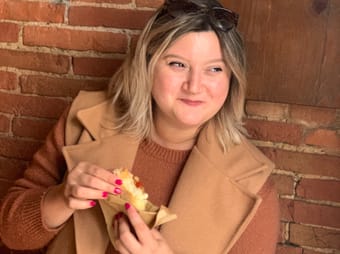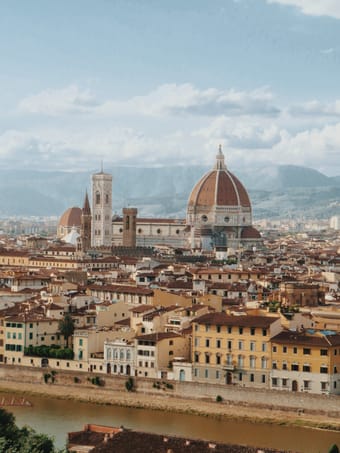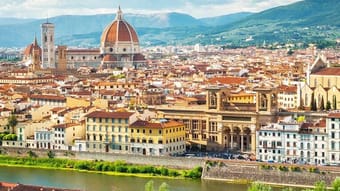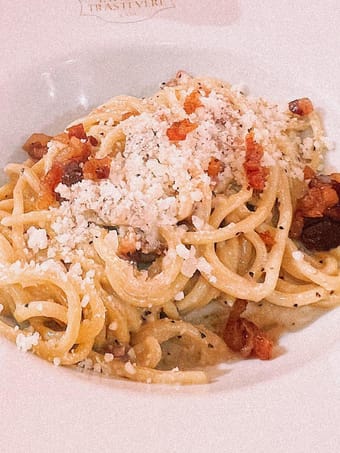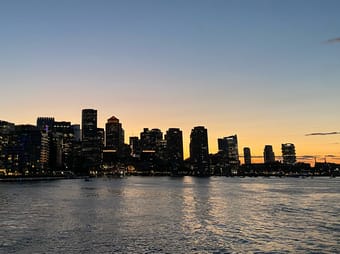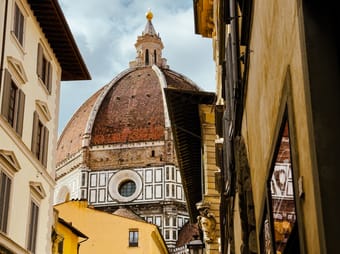Results for Tuscany, Itália
Forte dei Marmi, a gem of the Tuscan coast, is a perfect blend of luxury and Italian charm. Its streets are full of boutiques, cafes and restaurants that convey a relaxed and sophisticated atmosphere. A destination that perfectly combines luxury with Italian authenticity
Boutique • History • Design • Luxury • Outdoors • People & Culture • Photography • Shopping • Romantic • Wellness
Free
1
Florence has become very well-known for panini, different kinds of sandwiches stuffed with all things delicious.
Many visitors tend to flock in mass to the same Insta-famous shop, which is ok, but not worth wasting precious hours standing in line, when you could very easily just walk up to an even better establishment.
This is my ultimate list as a Tuscan native, with detailed descriptions and videos about what makes each panini shop unique 💎
Don't forget to download Thatch app to access full features and to save ☑️ this map for future use!
Italian Language 101: one panino, two panini.
Foodie
Free
180
Florence, an open-air museum nestled along the Arno River, is a timeless masterpiece where art and history intertwine. This cradle of the Renaissance pulses with an infectious energy, inviting visitors to wander through cobblestone streets lined with world-renowned galleries and architectural gems. From the grandeur of the Duomo's dome to the intimate charm of the Pitti Palace, Florence is a sensory overload, captivating hearts with its elegance, inspiring minds with its artistic legacy, and tantalizing taste buds with its Tuscan cuisine.
This guide includes:
- introductory note
- places to visit (photo spots, museums and cultural venues, open squares, and others)
- photo spots
Get to see more from my travels on my Instagram (@pedralexpereira) and Flickr (flickr.com/photos/pedralexpereira)
$5.00
2
Comprehensive 6-day itinerary, designed to the only resource you'll need and all-inclusive of transportation, accommodation, restaurant, and sightseeing recommendations!
Embark on a captivating journey through Zurich, Milan, and Florence, where modern elegance meets timeless culture. Begin in Zurich, Switzerland's cosmopolitan hub, renowned for its pristine lakes, vibrant art scene, and world-class shopping on Bahnhofstrasse. Next, immerse yourself in Milan, Italy's fashion capital, where history and haute couture collide. Explore the iconic Duomo di Milano, savor exquisite Italian cuisine, and experience the city’s dynamic nightlife. Finally, indulge in the Renaissance beauty of Florence, home to architectural marvels like the Duomo and Michelangelo’s David, while enjoying charming piazzas, boutique shopping, and Tuscan flavors. This trip promises a perfect blend of luxury, culture, and adventure.
Budget • Shopping • People & Culture • History
$25.00
0
Spending some time in beautiful Florence? This is a complete list that provides you with a handful of options: accommodation, tourist attractions, shops, bars and restaurants - you’ll need no other guide, I promise!
So…have a bite and a drink alongside Arno river and take home the most impressive bespoke souvenirs. The city is walkable and it blends art and history and romantic vibes all together and pretty soon you’ll find yourself in love. 💓
Must do - trips to picturesque towns located nearby:
• San Gimignano: 1h away
• Siena: 1h10 away
• Volterra: 1h20 away
Highlights:
⚜️ Il Giglio - giglio bottonato, is mainly known from the crest of the city of Florence. In the Florentine fleurs-de-lis, the stamens are always posed between the petals. This is also the emblem of the city and you shall see it depicted all over.
🍨 Gelato “crema fiorentina” - is the specific flavor of Florence, made with a simple combination of egg yolks, milk, and sugar. It is often flavored with chestnut honey, while another common addition includes crumbled amaretti cookies or almond liqueur. It is a neutral ice cream flavor with delicate pale-yellow color.
🍧 Affogato - a delightful and simple Italian dessert or beverage that combines two beloved elements: espresso and gelato or ice cream. The word "affogato" in Italian means "drowned," and that perfectly describes the preparation of this delicious treat. The basic affogato recipe involves pouring a hot, freshly brewed espresso over a scoop of cold gelato or ice cream. The hot espresso contrasts with the cold and creamy gelato, resulting in a harmonious and satisfying flavour combination.
🥩 Bistecca alla fiorentina - Italian steak made of young steer (vitellone) or heifer (scottona) that, combined with the specific preparation, makes it one of the most popular dishes of Tuscan cuisine.
🍷 "Buchette del vino" - or wine windows, are a peculiar feature of Florence. They are foot-high, dome-shaped holes in the thick, stone palazzi of the Renaissance city that six centuries ago were used to sell wine in a fiasco (glass bottle) without having to open a shop and avoid paying taxes. These wine windows also posed a useful anti-contagion way to sell wine during the epidemic of 1630-1633. At that time, the bubonic plague hit Florence hard, killing 12% of the city's population.
Romantic
Free
15
Having lived and dined in this lively city, I've rounded up 150 absolute favourite spots that you just can't miss! You have everything that you may need in ONE single guide. From quaint little cafes tucked away in charming corners to can't stop-won't stop devouring at restaurants & food markets to buzzing bars where the drinks flow like it's Saturday night everyday, I've tried to scour every inch of London and get you the best of indulgence ;)
-Restaurants
-Pubs & Bars
-Cafes
-Food Markets
-Breakfast places
-Bakeries & Desserts
If you're seeking tailored travel consultations or tips exclusively for London or The UK, feel free to schedule a meeting via the link provided on my profile. You absolutely can't have enough of London, and I'm excited to help you make the most of your time here or anywhere in the world :)
*I will keep updating this guide if I come across any popular current favourites or hear any bad experiences/reviews*
50+ • Backpacker • Business • Couples • Digital Nomads • Family • Groups • LGBTQ+ • Female Solo • Vegetarian • Halal • Gluten-free / Celiac • Budget • Coffee • Foodie • Luxury • Romantic • Wine • People & Culture
$9.99
5
Ecco una “food guide” per chi trascorre qualche giorno a Firenze! Una selezione accurata di locali, dalla colazione fino alla cena, pensata per chi non vuole perdere tempo a cercare il posto giusto in cui fermarsi a mangiare!
Here is a “food guide” for those who spend a few days in Florence! A careful selection of places, from breakfast to dinner, designed for those who do not want to waste time looking for the right place to stop for a meal!
Free
1
Ask ThatchGPT

